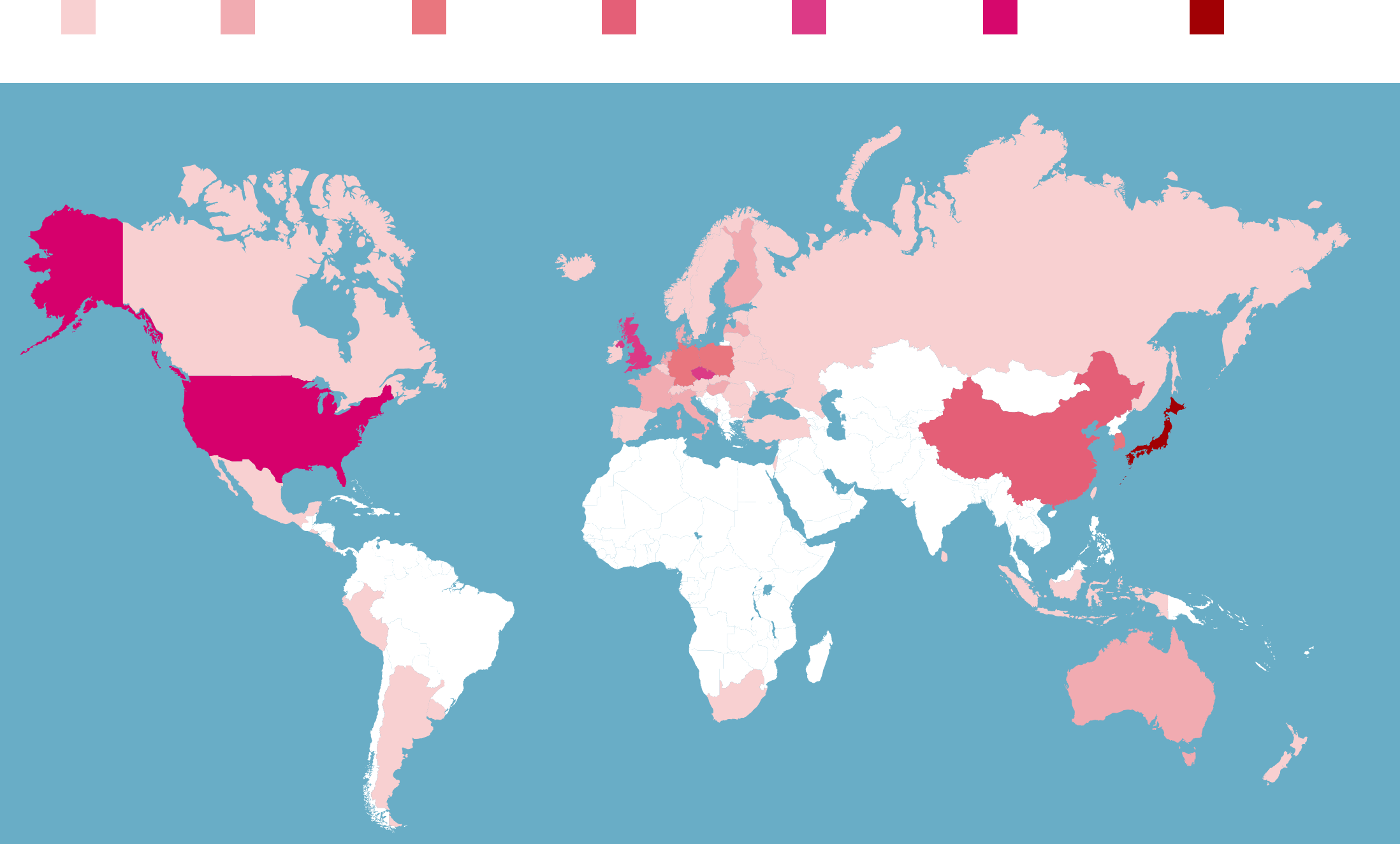Toyama International Glass Exhibition 2021
Prize-winning Works
Subtle Intimacy
2019
H84×W44×D1.4
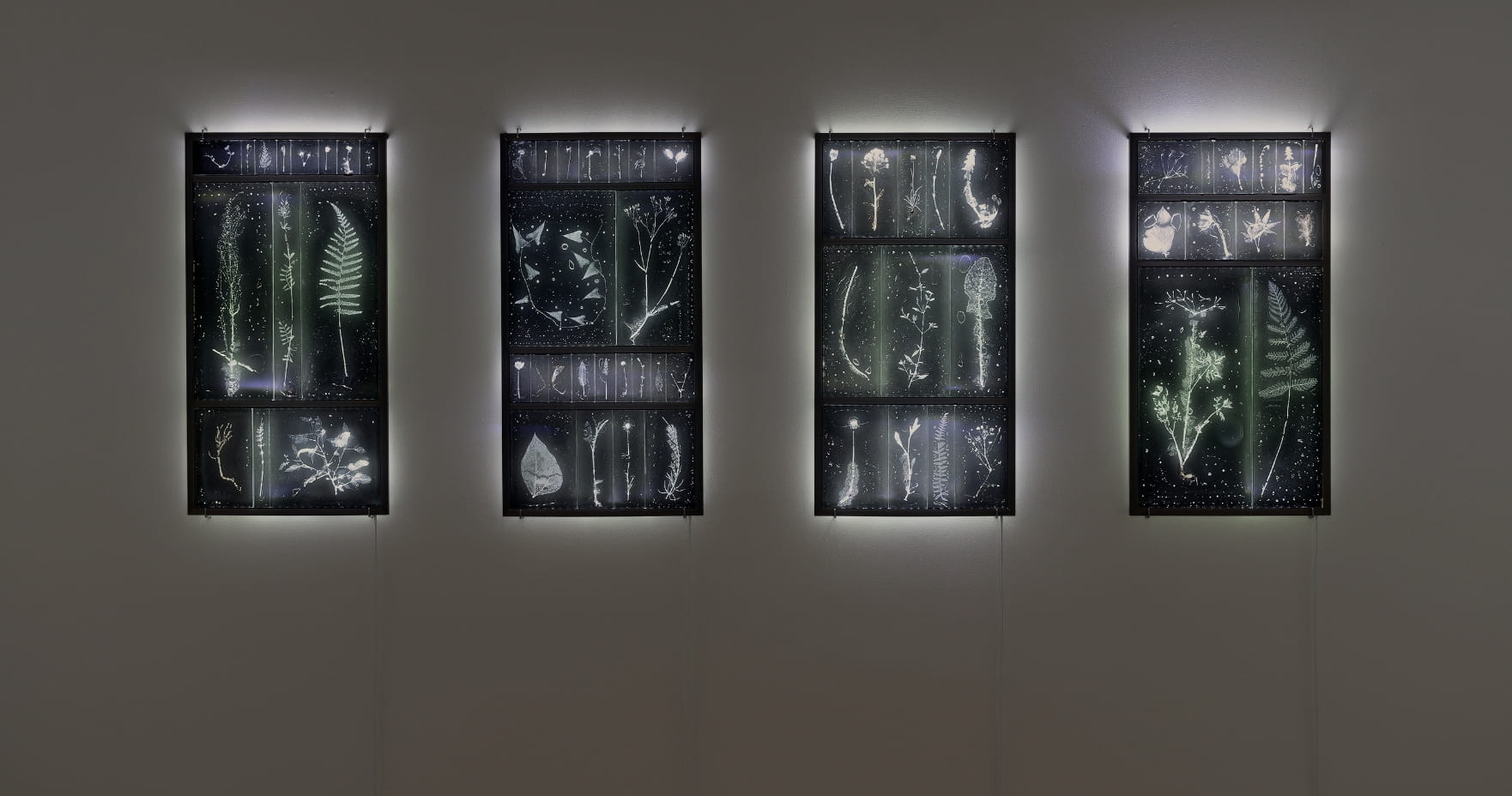
Photo: Ryohei Yanagihara
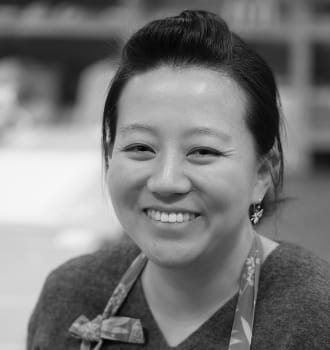
SASAKI Rui
Japan
I employ glass as a material that makes it possible to document and preserve presence, through my works exploring “subtle intimacy” perceived in places I am present.Collecting plants is the self-medication to revive my lost-intimacy with the five senses towards Japan as my mother country due to the reverse culture shock occurred since I came back from the United States. In this work, plants that I collected from where I visited were immutably preserved and recorded in the glass as white ashes. Moreover, the humidity, rain, and air that plants inhaled were visualized and preserved as bubbles in the glass after plants were fired in a kiln. White ashes were lit by lights and the delicate details of plant’s tubes and veins were unveiled. Through my exploration of the interest in my surroundings such as nature and the process of making work with glass, I am able to notice subtleness in everyday life and discover “subtle intimacy” for myself.

SASAKI Rui
Japan
Hatate #12
2018
H56×W61×D60
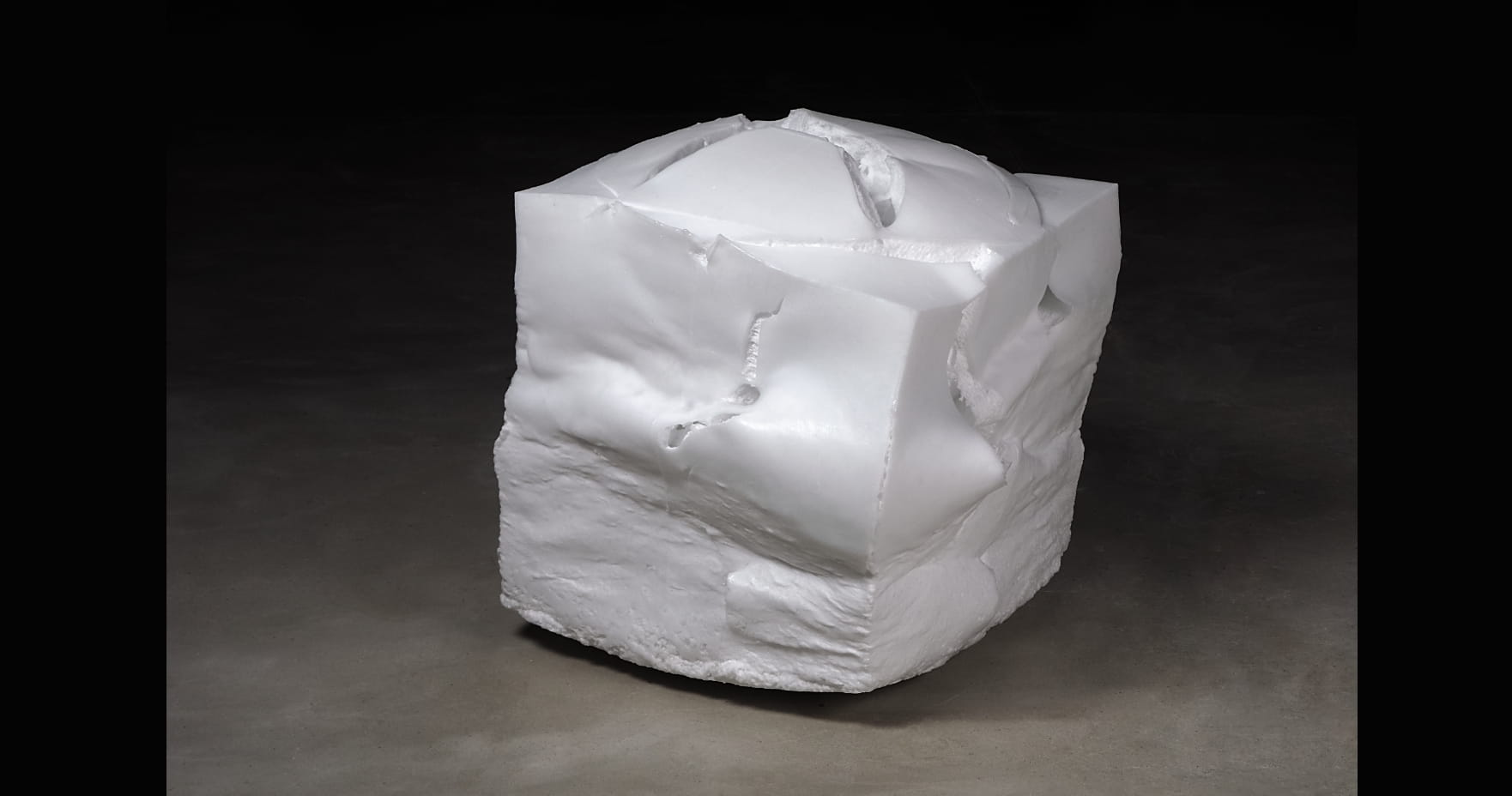
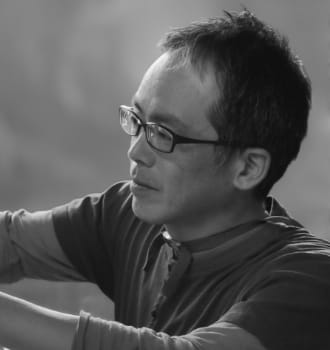
KOJIRO Yoshiaki
Japan
My focus is to form a definite structure with the least amount of intervention as possible.

KOJIRO Yoshiaki
Japan
【 Relight+MUSIC 】
2020
H300×W300×D300
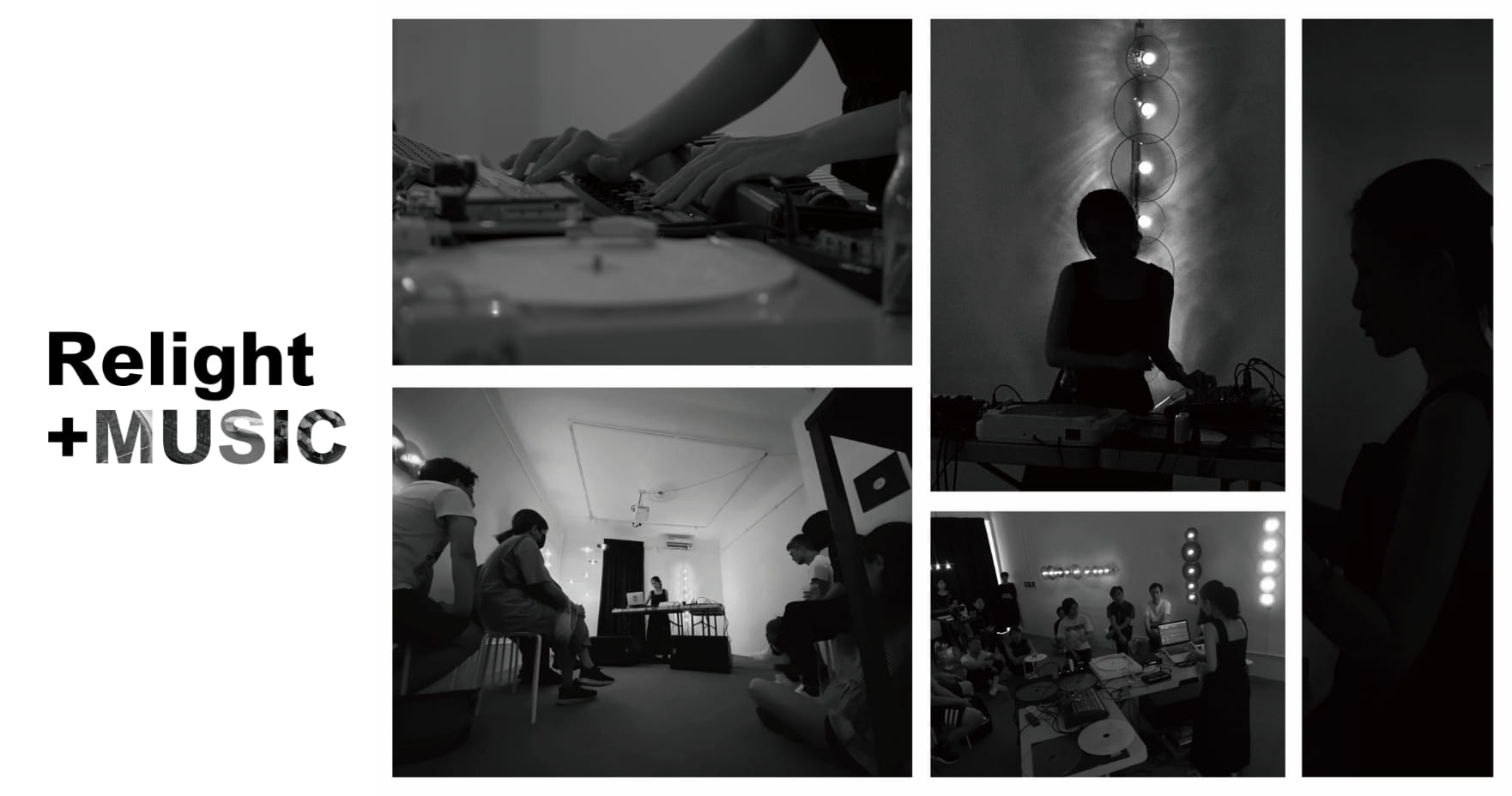
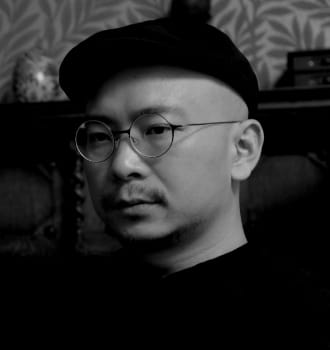
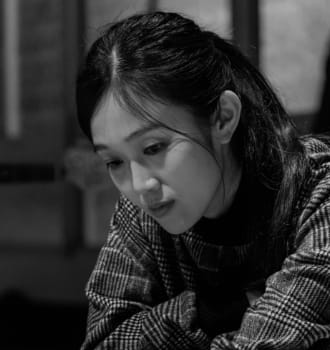
ZHENZHENLAB
Taiwan
When a piece of patterned glass, approximately the size of a 12-inch vinyl record, is placed on a turntable, what arises from the textures of the glass patterns are sounds of varying frequencies and modulations: electronic beats, heartbeats, bursts of noise, and murmurs. By listening carefully, even melodies unfolding in the background can be heard. Each piece of glass is like a planet, twinkling within the space of unique rhythms and sounds. Using the visual, tactile and auditory features of traditional patterned glass, as well as the glassmaking process, this album hopes to trigger a sense of wonder and imagination in the listener. Listening to the refinement and modulation found within different patterns, we search for the sparkle arising from the impact of glass planets and the universe created between listeners and sound.


ZHENZHENLAB
Taiwan
Dear my creature
2020
H73×W360×D90
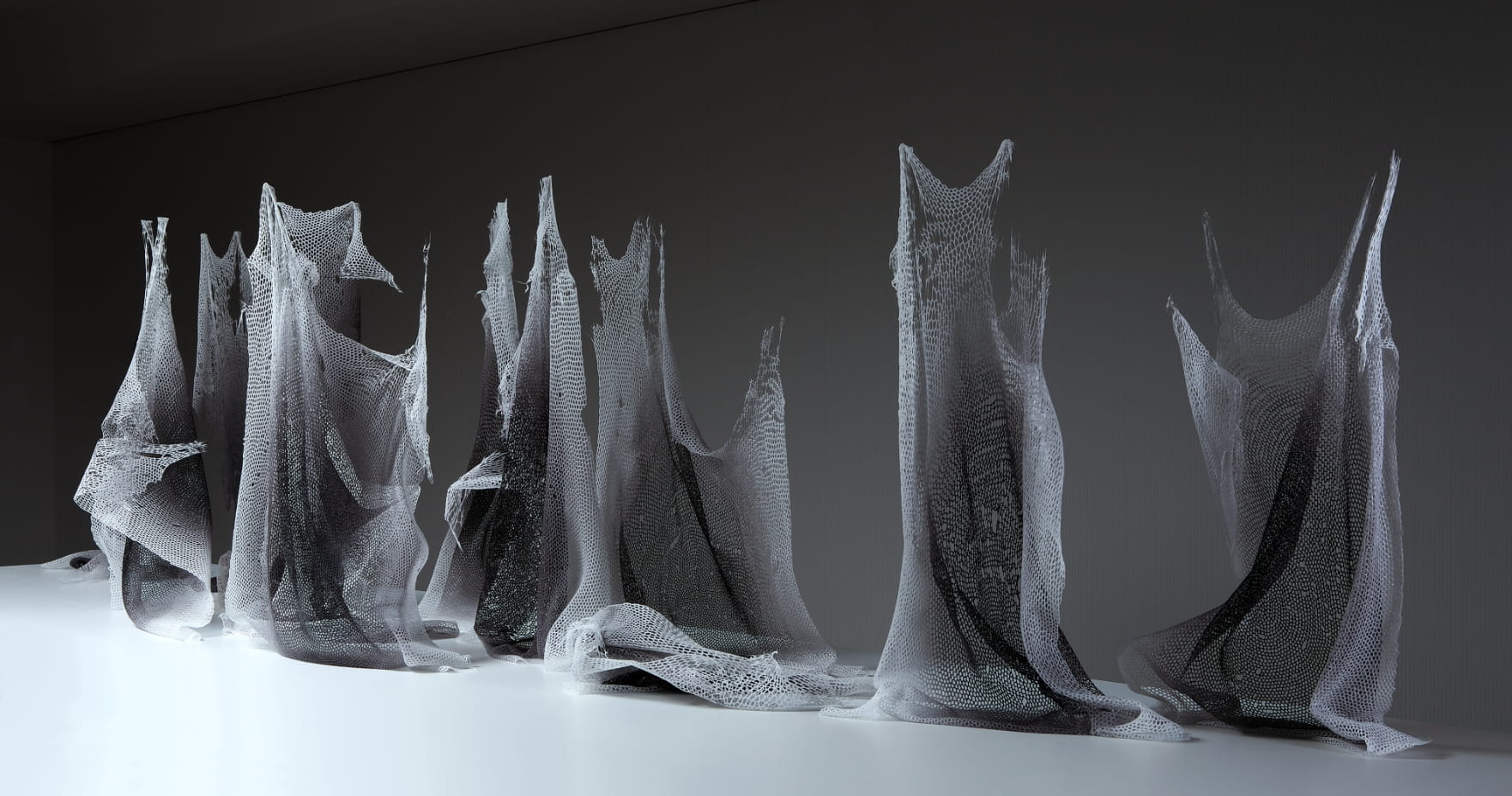
Photo: Okamura Kichiro
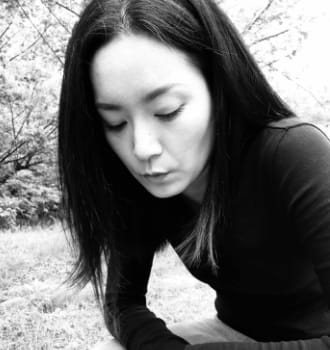
SATO Shizue
Japan
An inner child inside of my mind has come up through the material, and be reborn into brand-new myself. The expression is a locus of self-integration.

SATO Shizue
Japan
Chorus of One
2018
H150×W30×D1

Sound Performance: Alethea Alexander / Choreography,Cloak, Editing: Anna Mlasowsky / Camera: Derek Klein
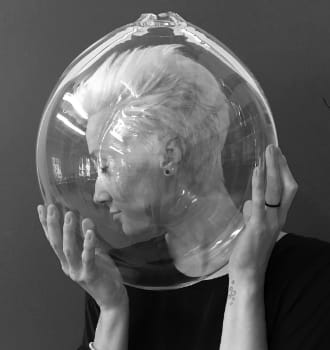
Anna MLASOWSKY
United
States of
America
Chorus of One is a wearable sound object, producing multiple tones when activated through performance. The wearable was created after the facets of a found rock. Each scale of the cloak is a face of the rock, the dimensions were kept from the original rock. The type of glass used for the creation of this object was a material developed for body armor by Corning Inc. as a specialty glass product for the military, which I got to use during my Specialty Glass residency in 2016. The glass is called Rhino glass and because of its unique property of extreme shatter resistance allows for the high impact motion. The object mimics animals protective strategies such as the sounds of rattlesnakes and the scaled bodies of pangolins, which both invoke automatic emotional impulses to maintain a distance but also compel us to move closer and create mystical tales around the medicinal and spiritual power of these creatures.

Anna MLASOWSKY
United
States of
America
The Beginning of the End of the World
2020
H164×W166×D269
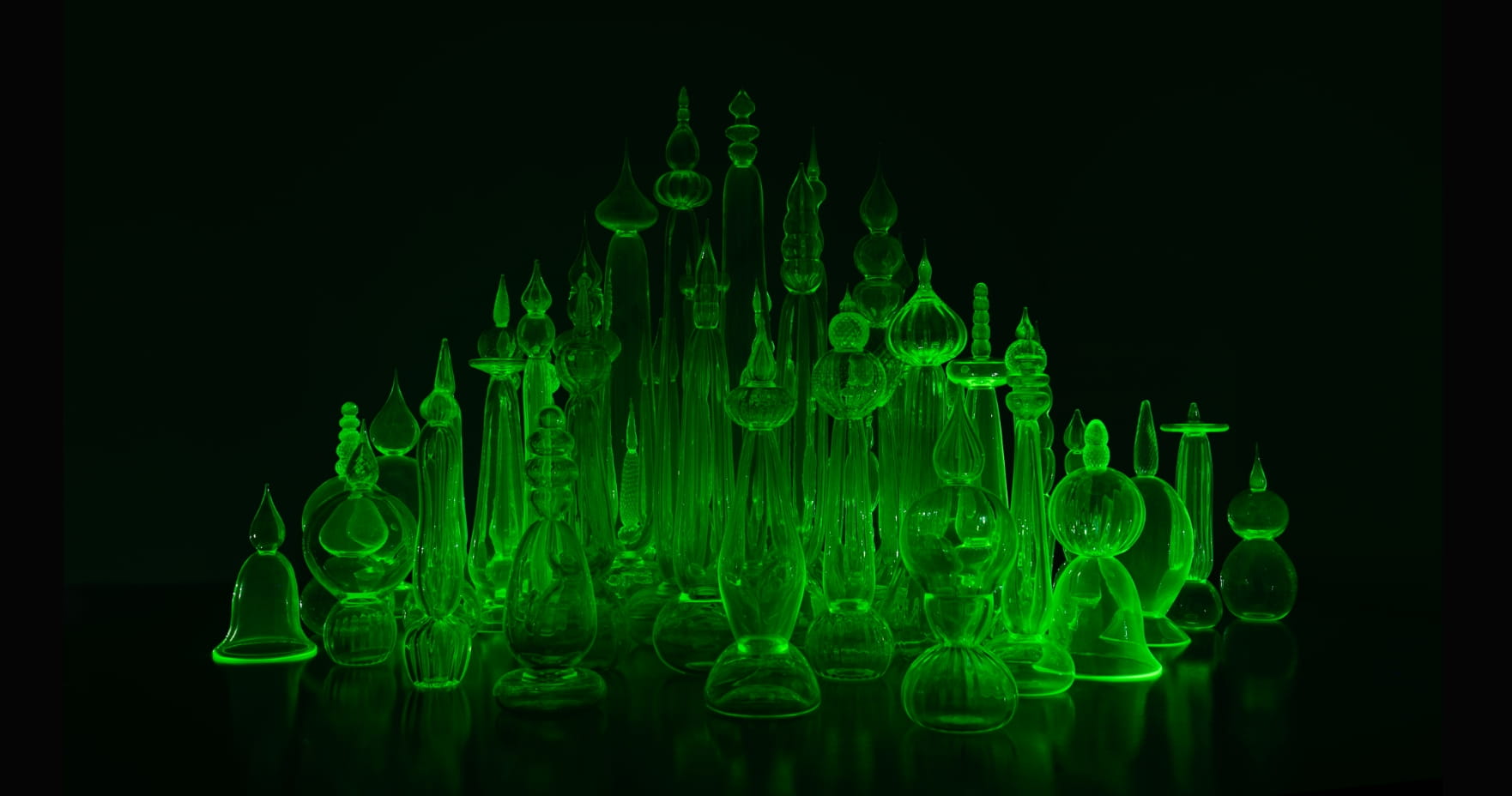
Photo: KATO Norie
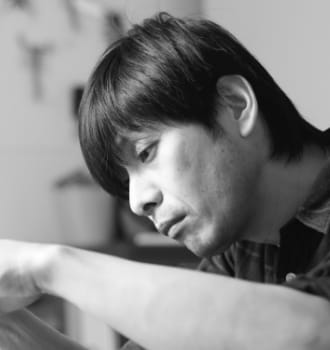
MATSUFUJI Koichi
Japan
The substance of beautiful shining desire captivates the human spirit. Like an organism, it repeats endlessly.

MATSUFUJI Koichi
Japan
Müller
2020
H45×W35×D10
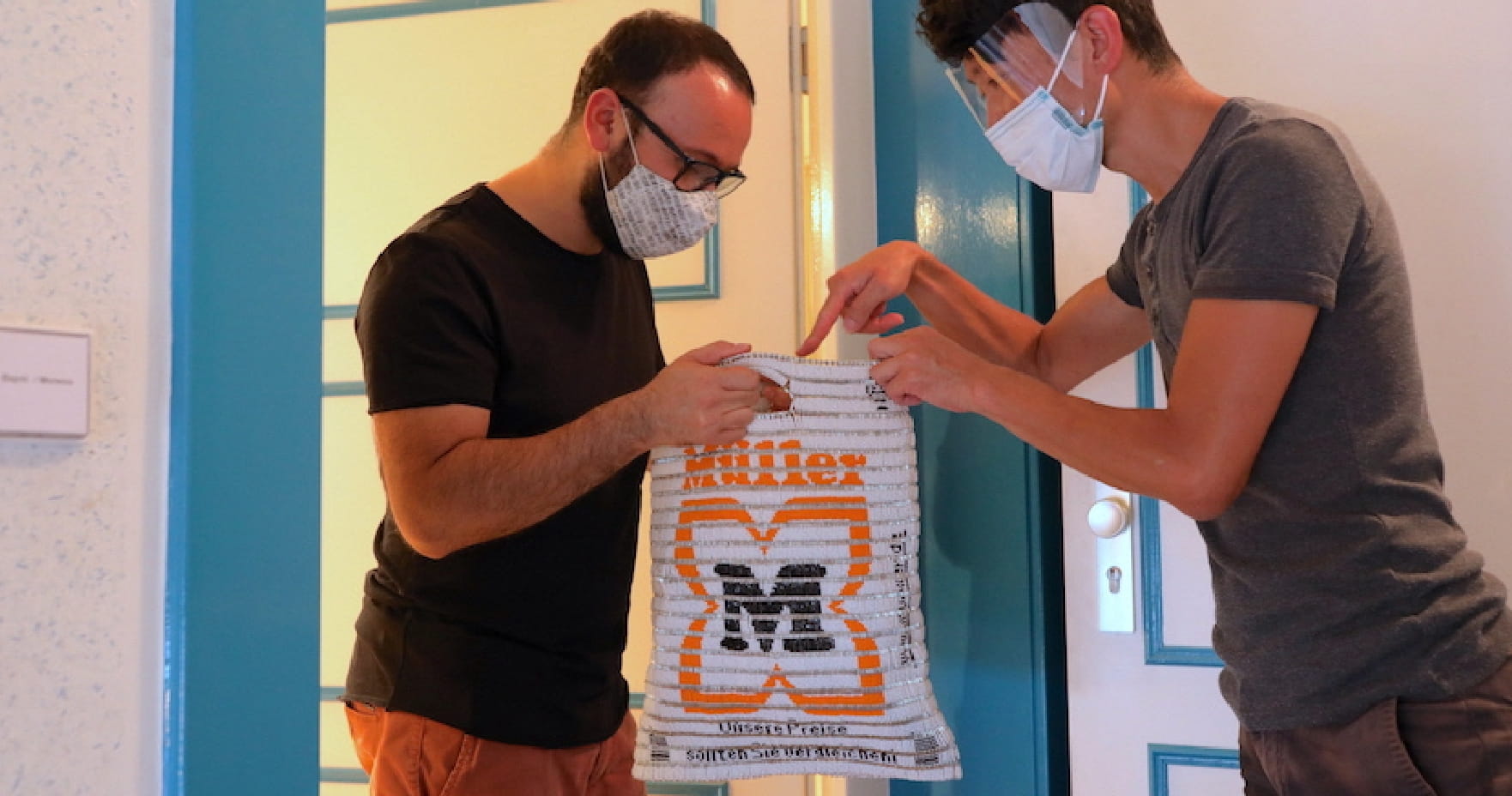
Photo: Edin Bajric
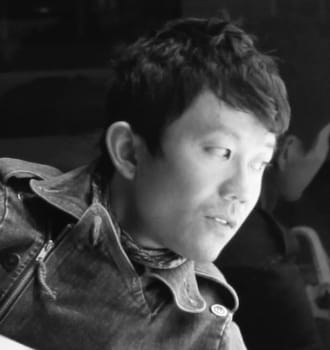
Shige FUJISHIRO
Federal
Republic of
Germany
A shopping bag project that started in 2009. These are discount supermarkets, luxury brands, or one of a variety of bags randomly stored in the back of the shelves. The artist perfectly duplicates various mass-produced shopping bags over time by passing each bead through a safety pin precisely on a time axis that contrasts with it. It poses a problem to the importance of the brand logo, which goes beyond the function of a bag, and to the consumerist society, which is mass-produced at low cost. In addition, the artist compliments his work by creating photographs of constructs of everyday scenes that include his work in place of the original bag.

Shige FUJISHIRO
Federal
Republic of
Germany
Pilchuck, Autumn 2019 (2)
2020
H42×W85×D1.8
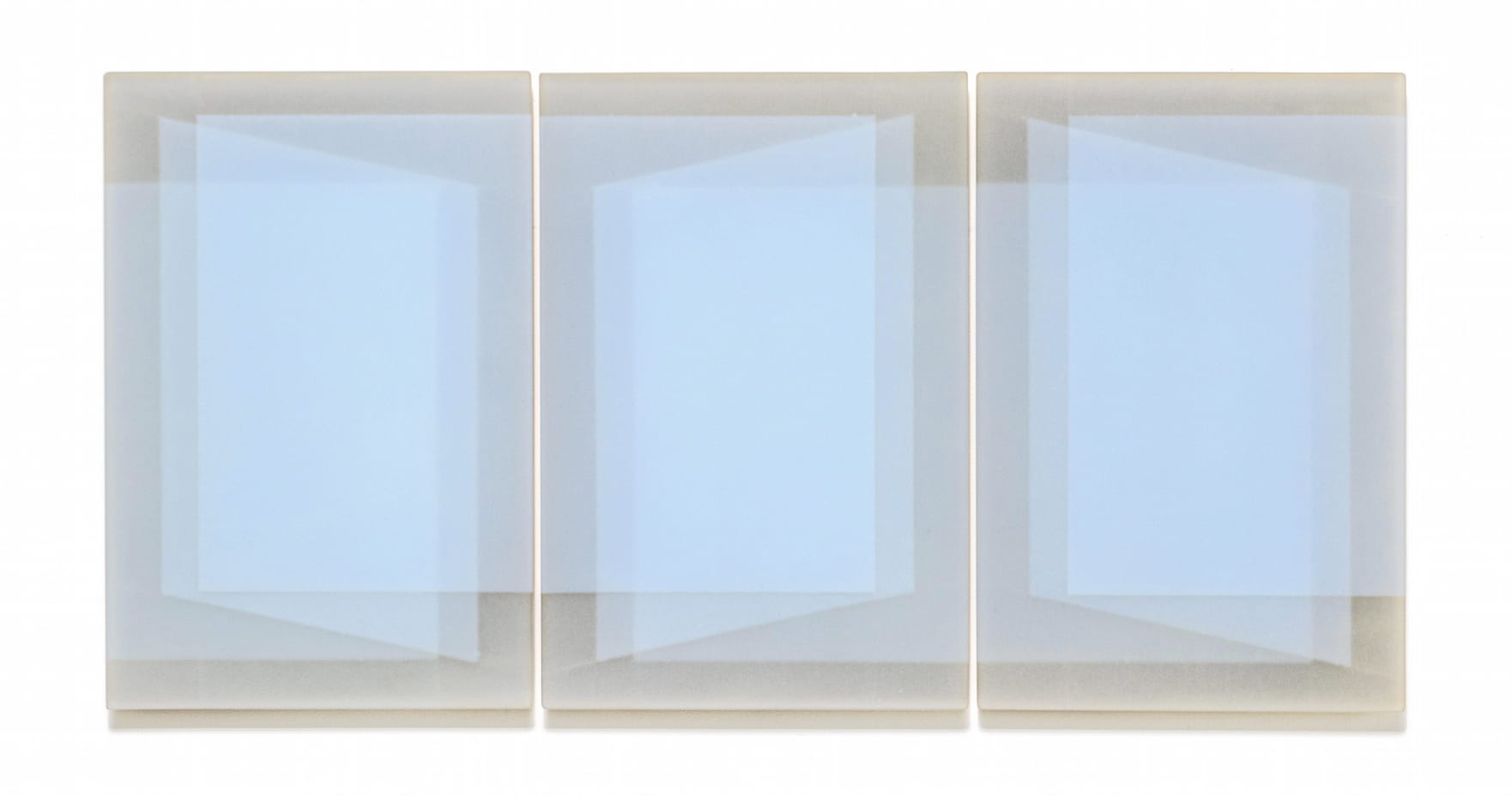
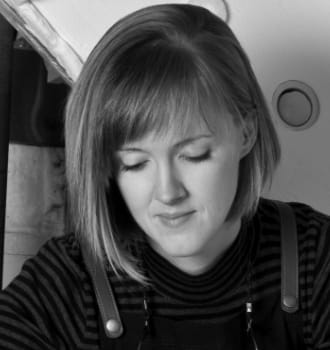
Karlyn SUTHERLAND
United
Kingdom
Central to my work is a long-standing interest in the bond between people and place; my practice explores how characteristics and qualities of space are capable of shaping our experience, memories and sense of attachment to our surroundings. Autobiographical in nature, my work is a reaction to vivid memories and intangible qualities of significant moments, distilling and communicating the essence of an experience of light, shadow and atmosphere within particular spaces. The act of making is contemplative – a tool which allows me to explore, contemplate and strengthen my own relationship with and understanding of place. This piece is a response to memories of early mornings at Pilchuck Glass School – folding shutters on windows revealing muted autumn colour through misty air and changing light, and the promise of a new day.

Karlyn SUTHERLAND
United
Kingdom
C57BL/6
2019
H25×W60×D60
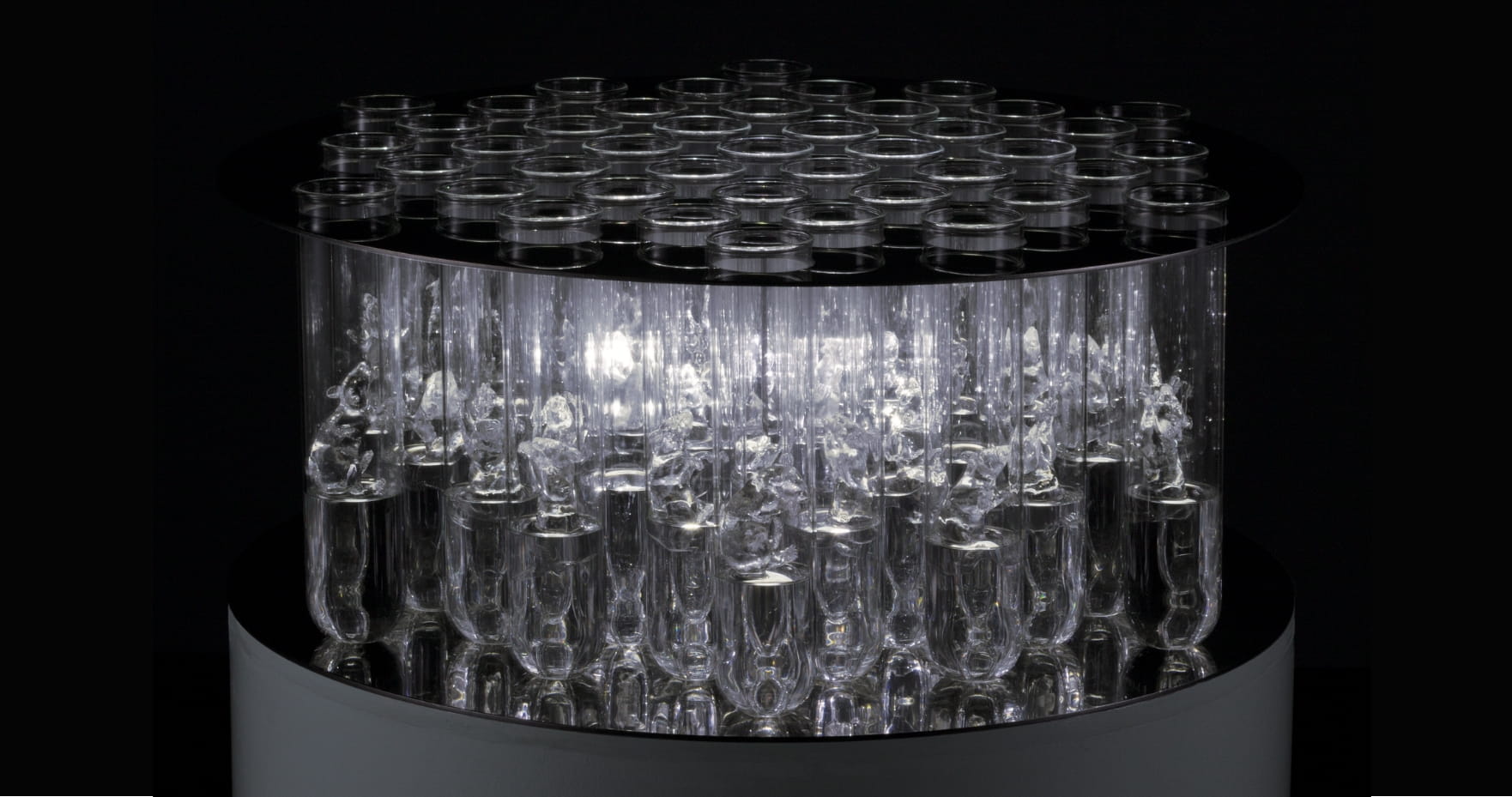
Photo: Okamura Kichiro
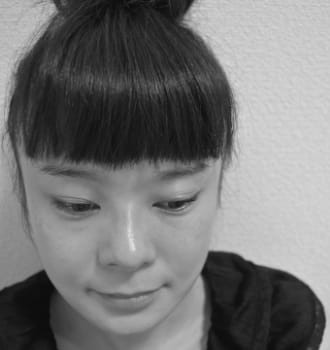
MATSUO Rina
Japan
What provided the inspiration for this work was the disturbing feeling of regenerative medicine to create a human organ inside of an animal. Humans use animals as tools. I chose mice, which account for 90% of all animal experiments, as the motif for this artificially mass produced life. They are valued for research because they have similar life activities to humans, are small and easy to handle, and have a fast reproductive cycle. They are being manufactured and consumed by humans one after another as if they did not exist, even though they do exist as living things. When we are sick, we take medicine and go to the hospital for treatment. Many animals are used in these medical experiments, and a variety of animals support our lives. The title of the work, which appears to be a string of meaningless letters, is the name of the most widely used and distributed laboratory mouse, who is genetically controlled to be identical. I chose the title C57BL/6 because the existence of a mass-produced mice with the same genes seems to me to be a symbol of artificial life. I dared to make the act of searching the Internet for text strings a part of the work by giving it a title that not everyone would understand. I hope that my audience will take the time to search for the words, understand the meaning, and feel something too. The liquid in the test tube is liquid paraffin, used as a reagent in biological experiments. I used liquid paraffin, which has a similar refractive index to that of glass in order to blur the presence of mice in the liquid, making it appear as if the mice were emerging from the liquid

MATSUO Rina
Japan
Finalists (Please scroll to the side for full information.)
| Title | Artist | Production Year |
Countries & Regions | |
|---|---|---|---|---|
| Space | ABIRU Shougo | 2020 | Japan | |
| Within Matter #5 | Kate BAKER | 2018 | Australia | |
| Circle of Desire I | Bang & Sparre-Petersen | 2020 | Kingdom of Denmark | |
| Elements of a Place II | Clare BELFRAGE | 2020 | Australia | |
| Wild Flowers Collection | Juli BOLAÑOS-DURMAN | 2019 | United Kingdom | |
| Flight | Vanessa CUTLER | 2019 | United Kingdom | |
| Line Drawing | Maria Bang ESPERSEN | 2020 | Kingdom of Sweden | |
| Vestige | FUJIKAKE Sachi | 2020 | Japan | |
| Müller | Shige FUJISHIRO | 2020 | Federal Republic of Germany | |
| Forgetting In The Process of Remembering | Joshua HERSHMAN | 2019 | United States of America | |
| Pillars | Saman KALANTARI | 2020 | Italian Republic | |
| Sunset after Rain | KIM Joon-Yong | 2020 | Republic of Korea | |
| Echo (coral) | David KING | 2020 | United States of America | |
| Resuscitation | KINOSHITA Yui | 2020 | Japan | |
| Layers of Light -Moon- #7 | KOJIMA Yukako | 2020 | Japan | |
| Hatate #12 | KOJIRO Yoshiaki | 2018 | Japan | |
| Heda | Jitka KOLBE-RůžIčKOⅤÁ | 2020 | Czech Republic | |
| The Horizons of Light No. 02 | Pavel KORBIčKA | 2019 | Czech Republic | |
| Moving water | Chloe KOTTWITZ | 2019 | United States of America | |
| Ancient sound series 12 | LI Fubiao | 2019 | People’s Republic of China | |
| Gather Study 1 | Amber MARSHALL | 2019 | United States of America | |
| The Beginning of the End of the World | MATSUFUJI Koichi | 2020 | Japan | |
| C57BL/6 | MATSUO Rina | 2019 | Japan | |
| Chorus of One | Anna MLASOWSKY | 2018 | United States of America | |
| On the palm of your hand | Jagoda NOWAK-BIEGANOWSKA | 2019 | Republic of Poland | |
| Day-dreaming | ODAHASHI Masayo | 2020 | Japan | |
| Memory Drop Ⅱ | PARK Youngho | 2020 | Republic of Korea | |
| Ambiguous Figure | Nate RICCIUTO | 2019 | United States of America | |
| Take It All In | Madeline RILE SMITH | 2020 | United States of America | |
| Subtle Intimacy | SASAKI Rui | 2019 | Japan | |
| Dear my creature | SATO Shizue | 2020 | Japan | |
| Pulse | David SCHNUCKEL | 2019 | United States of America | |
| Primary Structures | Veronika SUTER | 2020 | Swiss Confederation | |
| Pilchuck, Autumn 2019 (2) | Karlyn SUTHERLAND | 2020 | United Kingdom | |
| Bloom Softly | TOGASHI Yoko | 2020 | Japan | |
| TO COVER | Dalia TRUSKAITE | 2020 | Republic of Lithuania | |
| the Moonlit Flowers | WATANABE Chiemi | 2020 | Japan | |
| Erosion II | Julius WEILAND | 2018 | Federal Republic of Germany | |
| wander / wonder (1) | Ida WIETH | 2020 | Kingdom of Denmark | |
| Indistinct Thing-in-Itself #1 | XIAO Tai | 2020 | People’s Republic of China | |
| Experimental process | YANG Huihuang | 2019 | People’s Republic of China | |
| Amorphous19-8 | YOKOYAMA Shohei | 2019 | Japan | |
| Two zero two zero | WANG Yuhong | 2019 | People’s Republic of China | |
| Gravitational energy | ヴVladimir ZBYNOVSKY | 2019 | French Republic | |
| 【 Relight+MUSIC 】 | ZHENZHENLAB | 2020 | Taiwan |
Number of Applicants by Country
